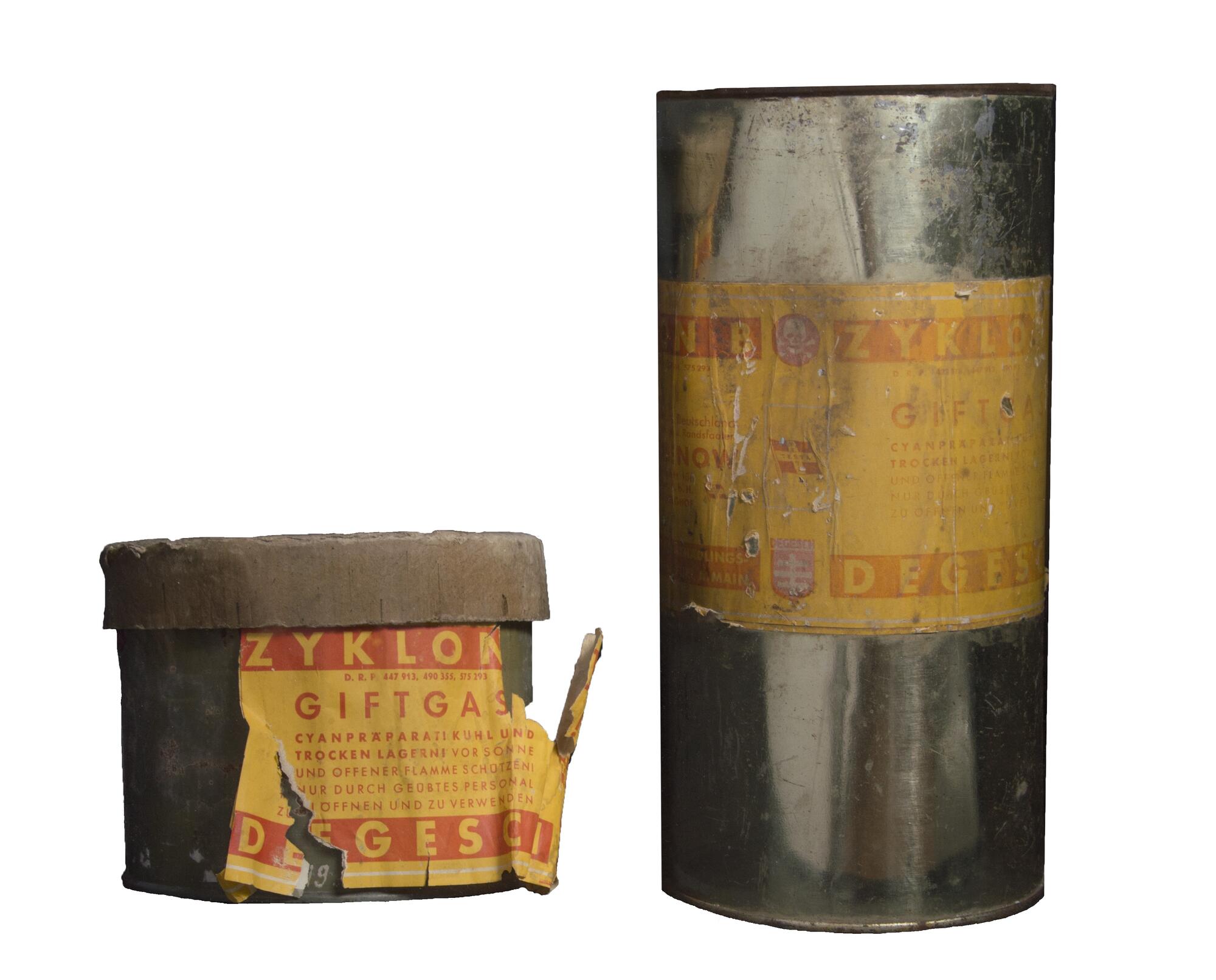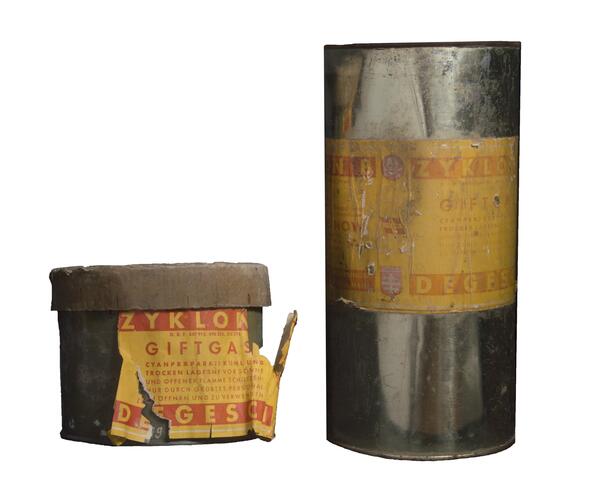The collection of the Military Medical Museum contains authentic exhibits that serve as evidence of the Nazis’ crimes against humanity. These items entered the museum from the German concentration camps of World War II — Majdanek, Auschwitz, Ravensbrück, Buchenwald — and they make up the largest collection of such items in Russia. One of these items is an insecticide can “Cyclone B” (“Zyklon B ” in German).
On March 22, 1933, the first concentration camp, Dachau, was established in Germany. With the beginning of the war, camps started to be opened across the entire territory controlled by the Third Reich. The Nazis sent politically “unreliable” people to camps, as well as the opponents of the regime, criminals, prisoners of war, and the members of the so-called “inferior races” — Jews, Roma, Poles, Russians. In the entire history of the concentration and extermination camps, 18 million people were camp prisoners, 12 million of which were killed.
The territory of each camp was surrounded by electrically charged barbed-wire fences. The perimeter was surrounded by guard towers. There were barracks for prisoners, utility and administrative premises, warehouses, gas chambers and crematoria in the camp. As soon as the prisoners arrived at the camp, each of them received a special tag with the camp number.
In the Auschwitz-Birkenau camp, better known as Aushwitz, the prisoners had their camp numbers tattooed on the inner side of their forearms.
The prisoners lived in wooden barracks, slept on triple bunk beds covered with dirty straw. The working day began at four o’clock in the morning. The prisoners worked under strict supervision for 12–18 hours a day performing the hardest jobs at construction sites, at stone quarries, in mines, in factories, and in workshops where uniforms and weapons were produced. The prisoners were beaten up for the slightest offense. They were poorly fed.
The Nazis used the ‘Cyclone B’ insecticide in the camps intended for mass murders, such as Majdanek and Auschwitz. This gas consists of crystals of hydrogen cyanide mixed with an adsorbent and irritant. When exposed to heat and moisture, ‘Cyclone B’ released hydrogen cyanide, which disrupted cellular respiration. Death from the insecticide occurred within 5–15 minutes.
Concentration camps (Konzentrationslager) differed from extermination camps (Vernichtungslager) — the latter were intended for the continuous extermination of people. These camps were Chelmno, Treblinka, Belzec, Sobibor, Majdanek and Auschwitz.
On March 22, 1933, the first concentration camp, Dachau, was established in Germany. With the beginning of the war, camps started to be opened across the entire territory controlled by the Third Reich. The Nazis sent politically “unreliable” people to camps, as well as the opponents of the regime, criminals, prisoners of war, and the members of the so-called “inferior races” — Jews, Roma, Poles, Russians. In the entire history of the concentration and extermination camps, 18 million people were camp prisoners, 12 million of which were killed.
The territory of each camp was surrounded by electrically charged barbed-wire fences. The perimeter was surrounded by guard towers. There were barracks for prisoners, utility and administrative premises, warehouses, gas chambers and crematoria in the camp. As soon as the prisoners arrived at the camp, each of them received a special tag with the camp number.
In the Auschwitz-Birkenau camp, better known as Aushwitz, the prisoners had their camp numbers tattooed on the inner side of their forearms.
The prisoners lived in wooden barracks, slept on triple bunk beds covered with dirty straw. The working day began at four o’clock in the morning. The prisoners worked under strict supervision for 12–18 hours a day performing the hardest jobs at construction sites, at stone quarries, in mines, in factories, and in workshops where uniforms and weapons were produced. The prisoners were beaten up for the slightest offense. They were poorly fed.
The Nazis used the ‘Cyclone B’ insecticide in the camps intended for mass murders, such as Majdanek and Auschwitz. This gas consists of crystals of hydrogen cyanide mixed with an adsorbent and irritant. When exposed to heat and moisture, ‘Cyclone B’ released hydrogen cyanide, which disrupted cellular respiration. Death from the insecticide occurred within 5–15 minutes.
Concentration camps (Konzentrationslager) differed from extermination camps (Vernichtungslager) — the latter were intended for the continuous extermination of people. These camps were Chelmno, Treblinka, Belzec, Sobibor, Majdanek and Auschwitz.



